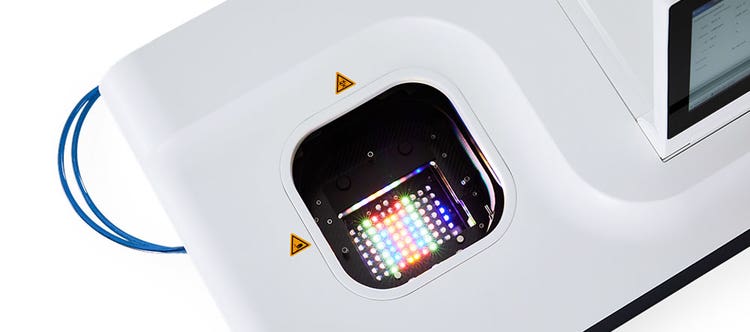Beckman Coulter Life Sciences, a global leader in laboratory automation and innovation, is lighting up microbioreactor research with its powerful new Light Array Module (LAM) for the popular BioLector XT Microbioreactor. For the first time, this new advancement enables work with light-dependent organisms that need to perform photosynthesis to grow.
The Light Array Module provides customizable light settings of 400-700 nm (nanometer) within the photosynthetic spectrum, including day and nighttime lighting. The spectral flexibility is achieved by 16 different LED-types, which can each be controlled individually to deliver maximum irradiances and photon flux densities of up to 3500 µmol/m2/s (micromoles reaching one square meter per second).

This advancement allows high-throughput screening and process optimization for a wide range of phototrophic organisms, including microalgae and cyanobacteria. Utilizing real-time biomass, chlorophyll concentration, and fluorescence measurements, the BioLector XT Microbioreactor with LAM gives users real-time data without the need for pipetting samples for analysis.
Following its launch in May of 2021, the BioLector XT Microbioreactor has earned a loyal following. Equipped with patented FlowerPlate microtiter plate technology, it enables high-throughput strain screening, cultivation parameter monitoring, and feeding strategy optimization. The BioLector XT Microbioreactor is ideally suited for microbial, fungal, and algal cultivations with real-time evaluations of biomass, pH, dissolved oxygen (DO), and fluorescence for aerobes and anaerobes.
This article by one of our Danaher Life Sciences thought leaders was originally published in News Medical Life Sciences. Shared here by permission.
Beckman Coulter Life Sciences launches industry’s first microbioreactor light array module to enable the cultivation of photosynthetically active microalgae and microorganisms
